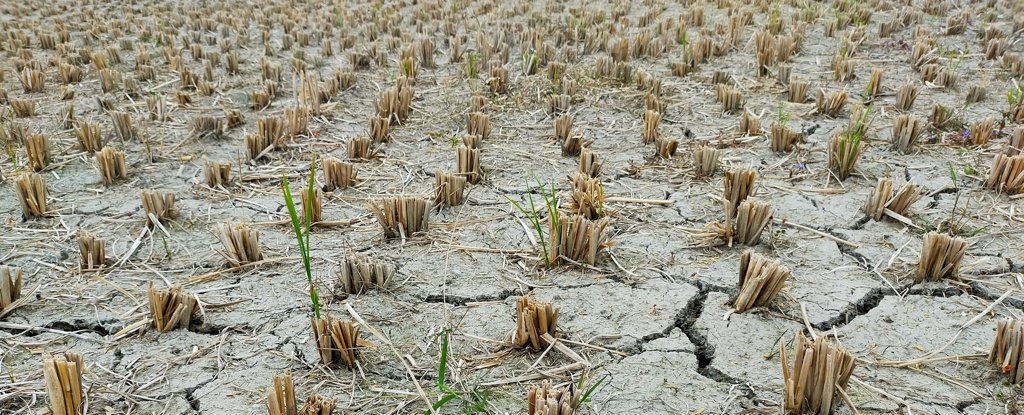Products You May Like
Most people have heard of a flash flood. ‘Flash droughts’, on the other hand, aren’t as familiar. Sadly, that may be about to change, as anomalous, sudden drought episodes are speeding up under the warmer conditions of climate change.
A new analysis of flash droughts finds that droughts coming on suddenly seem to be striking faster in the last two decades, with approximately 33–46 percent of flash droughts now emerging within just five days.
Compared to our traditional understanding of droughts – events that build up slowly over time due to a long deficit in rainfall – flash droughts are marked by a rapid intensification of drought conditions, including significant loss of moisture from soils, that develop quickly and with little warning.
The phenomenon has been observed in several countries, including the 2012–2013 North American drought, during which rapid drought conditions emerged in the central US in the space of weeks, along with recent episodes in Australia, China, and Africa, among others.
While these rapid events have been documented in many places, there’s much we still don’t fully understand about flash droughts, and why they appear so quickly.
“Few studies explore the rapid onset phase of flash droughts and underlying causes of the rapid onset which is the most important characteristic of flash droughts,” an international team explains in the new study, led by co-first authors Yamin Qing and Shuo Wang from the Hong Kong Polytechnic University.
“A global picture of flash drought onset is needed to reveal the spatial pattern and temporal variability of the speed of flash drought development, advancing our understanding of flash droughts on a global scale.”
To provide such an overview, the researchers analyzed 21 years of hydroclimate data, gleaned from satellite measurements of rapid and severe declines in soil moisture around the world from 2000 to 2020.
The results suggest that flash droughts are not increasing in number, but these fast-paced events do seem to be emerging even faster as time passes.
“Specifically, the onset development of flash droughts is becoming faster, and ~33.64−46.18 percent of flash droughts occur within five days for the period 2000−2020, which poses a great challenge for drought monitoring,” the researchers explain.
“In general, more than 70 percent of flash droughts develop within half a month, and more than 30 percent of flash droughts develop only within 5 days accompanied by a high intensification rate, whereas the traditional droughts may take five-six months to develop due to the cumulative effects of related climate variables.”
According to the researchers, flash droughts are likely to be triggered during episodes of atmospheric aridity, characterized by high temperatures, low precipitation, and high vapor pressure deficit, which exacerbates soil moisture depletion.
Regionally speaking, flash droughts are most likely to occur in humid and semi-humid regions – such as Southeast Asia, East Asia, the Amazon Basin, Eastern North America, and Southern South American – although they can also occur outside these hotspots.
“We should pay close attention to the vulnerable regions with a high probability of concurrent soil drought and atmospheric aridity,” says Wang.
In addition to monitoring vulnerable areas, the findings could help us mitigate the devastation of future flash droughts, by hopefully identifying them quicker using the criteria defined here, the researchers suggest.
“To further improve the ability of monitoring and predicting flash droughts, the criterion of a rapid intensification rate should be taken into account in addition to the relatively short onset timescales for capturing the unique characteristics of flash droughts,” the researchers conclude.
“The change in the state of the climate should also be incorporated into flash drought monitoring and prediction so that it remains meaningful in a warming climate.”
The findings are reported in Nature Communications.
